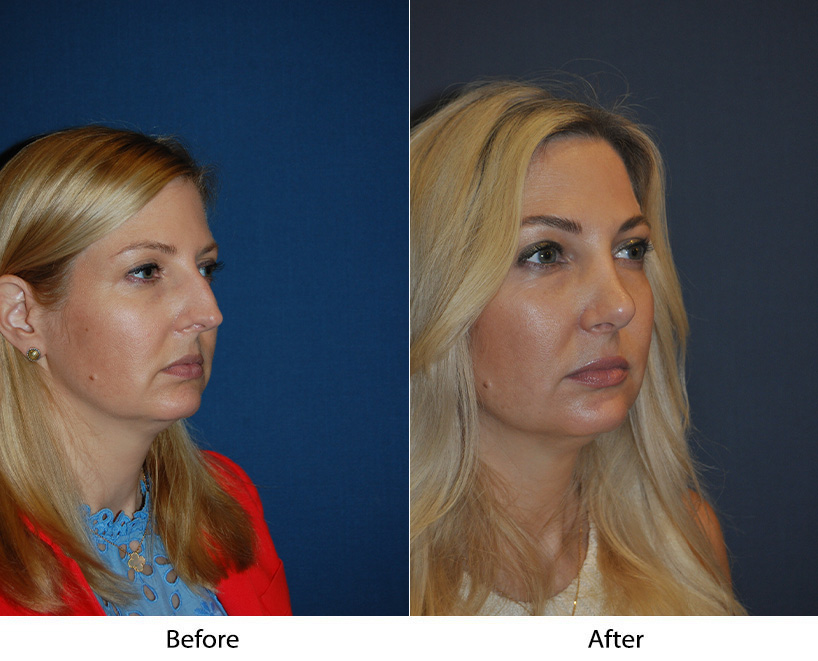Nose job surgeon can help you achieve facial symmetry
Charlotte’s top nose job surgeon can help you achieve facial symmetry. Rhinoplasty, commonly referred to as a “nose job,” is a surgical procedure aimed at altering the shape, size, or overall appearance of the nose. It is one of the most popular cosmetic surgeries globally, sought after by individuals for various reasons, including aesthetic enhancement or correction of breathing difficulties.
Over the years, rhinoplasty techniques have evolved significantly, allowing for more precise and personalized outcomes tailored to each patient’s unique needs. One of the fundamental questions often asked about rhinoplasty is whether it is a one-stage procedure. To answer this question comprehensively, it’s essential to delve into the intricacies of the surgery itself.
Navigating Rhinoplasty: A Patient’s Journey
Before undergoing rhinoplasty, patients embark on a journey that involves thorough research, consultations, and decision-making. Understanding the intricacies of the procedure, including the potential need for multiple stages or revisions, is crucial for informed decision-making. Patients should communicate their goals and concerns openly with their surgeon and seek realistic expectations regarding the outcome. Additionally, patients must adhere to pre-operative and post-operative instructions diligently to optimize healing and minimize complications. By actively participating in their rhinoplasty journey and maintaining open communication with their surgeon, patients can achieve satisfying results and a newfound sense of confidence in their appearance.
Understanding Rhinoplasty Surgery:
Rhinoplasty can be broadly categorized into two main types: open and closed procedures. In an open rhinoplasty, the surgeon makes an incision across the columella (the strip of tissue between the nostrils), allowing for better visibility and access to the underlying nasal structures. In contrast, a closed rhinoplasty involves incisions made entirely inside the nostrils, resulting in no visible external scarring.
Is Rhinoplasty a One-Stage Procedure?
The term “one-stage procedure” in the context of rhinoplasty refers to whether the entire surgery can be completed in a single operation or if it requires multiple stages or revisions to achieve the desired outcome. To answer this question, it’s crucial to consider several factors:
- Complexity of the Procedure: The complexity of the rhinoplasty plays a significant role in determining whether it can be completed in one stage. Simple cosmetic enhancements, such as reducing a dorsal hump or refining the nasal tip, may often be accomplished in a single operation. However, more complex cases involving significant structural alterations or functional corrections may require multiple stages to achieve optimal results.
- Patient’s Goals and Expectations: Each patient’s goals and expectations for rhinoplasty are unique. Some individuals may seek subtle refinements to enhance their natural features, while others may desire more dramatic changes. The extent of the changes desired can influence whether the procedure can be completed in one stage or if additional revisions are necessary to meet the patient’s expectations.
- Surgeon’s Expertise and Experience: The skill and experience of the surgeon performing the rhinoplasty also play a crucial role in determining whether it can be completed in one stage. A highly skilled and experienced surgeon can often achieve excellent results in a single operation, minimizing the need for additional revisions. However, less experienced surgeons or those unfamiliar with the intricacies of rhinoplasty may encounter challenges that necessitate multiple stages or revisions.
Factors Influencing the Need for Multiple Stages
While rhinoplasty can be performed as a one-stage procedure in many cases, several factors may influence the need for multiple stages or revisions to achieve the desired outcome:
- Complex Nasal Anatomy: The nasal anatomy varies significantly from one individual to another. Some patients may have underlying structural abnormalities, such as a deviated septum or weak cartilage, that require extensive correction. Addressing these complex anatomical issues may necessitate multiple stages or revisions to achieve optimal results without compromising nasal function.
- Desired Aesthetic Changes: Patients seeking significant aesthetic changes to the nose, such as reshaping the entire nasal structure or correcting asymmetry, may require multiple stages to achieve their desired outcome gradually. This approach allows the surgeon to carefully plan each stage of the procedure, ensuring that the changes are implemented in a controlled and precise manner to achieve symmetrical and natural-looking results.
- Functional Considerations: In some cases, rhinoplasty is performed not only for cosmetic purposes but also to improve nasal function, such as addressing breathing difficulties or alleviating obstructive sleep apnea. Functional rhinoplasty may involve additional procedures, such as septoplasty or turbinate reduction, which may increase the complexity of the surgery and require multiple stages to achieve the desired functional improvements.
- Healing and Recovery: The healing process following rhinoplasty is a crucial factor that can influence the need for multiple stages or revisions. While the initial results of rhinoplasty may be visible shortly after surgery, the outcome may take several months to fully manifest as swelling resolves and tissues settle. In some cases, minor asymmetries or irregularities may become apparent as the healing process progresses, necessitating minor revisions to achieve optimal symmetry and balance.
- Patient Satisfaction: Ultimately, patient satisfaction is paramount in rhinoplasty. If a patient is unhappy with the results of their initial surgery or desires further refinements, they may opt for additional stages or revisions to achieve their aesthetic goals fully. Open communication between the patient and surgeon is essential throughout the process to ensure that the patient’s concerns and expectations are addressed effectively.
In conclusion, while rhinoplasty can often be performed as a one-stage procedure, the need for multiple stages or revisions depends on various factors, including the complexity of the surgery, the patient’s goals and expectations, the surgeon’s expertise, and the need for functional improvements. By carefully considering these factors and tailoring the surgical approach to each patient’s unique needs, surgeons can achieve excellent outcomes and ensure patient satisfaction with the results of rhinoplasty.
Visit Charlotte’s top nose job surgeon
Contact Dr. Sean Freeman at Only Faces, Charlotte’s most experienced rhinoplasty surgeon and top facial plastic surgeon, to schedule a consultation to find out what procedure is right for you. Call today.

